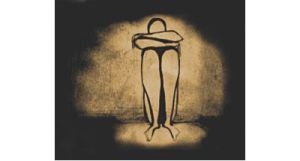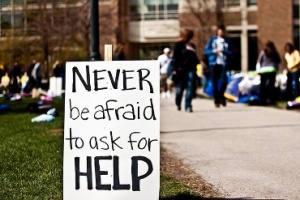The guidance counselor was kind and calm. Anyone who can maintain those two qualities while in the confines of a public middle school all day has my immediate respect. I sat and listened as he began to speak.
“Your daughter tells me things have been rough at home, that your family has had some pretty big challenges.”
“Yes. That’s true. We certainly have.”
It had been about two years since my husband’s traumatic and failed fight for his life, and though he was a stepfather to my children they loved and missed him deeply. I had returned to the workforce, my son had moved to his dad’s and his sisters didn’t often see him, we had made the transition from homeschooling to public school, and my older daughter had recently been released from a five-day stay at the psych ward.
Yup, I’d say those were some pretty big challenges.
“Well, she’s been having a tough time dealing with it all, as you can imagine.”
This was the coming-to-life of some of my deepest held fears at the time. In all fairness, I had quite a few fears, pretty much all of which included my kids. I knew that my older daughter’s struggles and rages were traumatizing our family. I knew that her continuing self harm and relentless thoughts of suicide were more than taking their toll.
I knew that I tried so hard to protect my younger daughter from her sister’s struggles, even as I didn’t know how to define or predict what those struggles might be. I knew how frightened I was, and I could only imagine how terrifying it must feel to a 13-year-old girl whose world had been shattered long before her sister’s mental balance had.
I knew that my youngest was getting lost in the shuffle of psychiatric appointments. I knew she felt invisible and dispensable as so much of my time was spent talking her sister ‘off the ledge’, cleaning and bandaging her self-inflicted wounds, walking on eggshells, trying to find an answer, a balance, a cure.
I knew that the older often goaded the younger, then immediately wanted her sympathy and compassion. She showed us all macabre, dark drawings she’d made, somehow expecting us to praise the depictions of death and blood she produced.
I could make no sense of it as an adult. I certainly could never expect my youngest teen to have the ability to process and make peace with all that was going on. And yet I felt powerless to guide her. How can you teach someone to do what you are unable to do yourself?
And so here we were, in the school guidance counselor’s office. I was waiting for what I didn’t want to hear, but what I needed to know.
My daughter had ended up there after having had a particularly rough day, and she’d thankfully confided in her counselor about the unfathomable mess that was our family. She’s always been one to think she can tough her way out of anything (I have vivid memories of a three-year-old determined to swim in the deep end of the pool, working hard to hide the panic on her face) and I was so glad to see that she’d taken the chance to share her confusion and pain with a trusted adult.
The counselor continued, gently breaking the news to me that my daughter – the one here with me, not the one (hopefully) waiting in the car – had been cutting herself as a way to deal with her distress and pain.
My stomach dropped then just as quickly threatened to jump up out of my throat. I was facing my daughter, whose eyes were filled with many things, including fear. I knew she’d seen me deal with her sister and that she’d seen me be both gentle and brusque in trying to stop the ongoing and escalating self harm. Of course she had to be nervous about what my reaction to this news would be.
Outwardly I pretty much held it together, meaning I didn’t curl up in the corner in a fetal position. I fought the sudden nausea I felt.
But inwardly I was breaking, as if there was a tire screeching, metal crushing, glass shattering 75 car pileup, the kind where you know things are so out of control you are clueless as to where or how to start administering any kind of aid. The kind where you are the lone witness and all you have are Band-Aids and the phone lines are down so try as you might you can’t call for the 50-plus ambulances that you need.
That kind of breaking.
Tears sprang to my eyes.
“Oh, sweetie.”
It was all I could say.
© Monica Simpson and Help To Hope, 2014
https://www.facebook.com/HelpToHope
https://twitter.com/HelpToHope






















